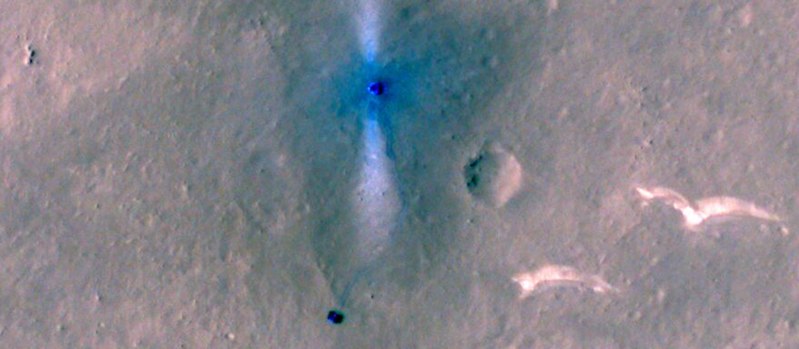China's Tianwen 2 Probe Captures Stunning Earth and Moon Images

On May 30, 2025, China’s Tianwen 2 asteroid-sampling probe successfully captured breathtaking images of Earth and the Moon as it embarked on its journey to the near-Earth asteroid Kamo'oalewa. Launched on May 28 from the Xichang Satellite Launch Center aboard a Long March 3B rocket, the spacecraft is China's pioneering mission aimed at collecting samples from an asteroid, marking a significant milestone in its space exploration endeavors.
The China National Space Administration (CNSA) announced the successful imaging through a statement released on July 1, indicating that the Tianwen 2 spacecraft was approximately 590,000 kilometers (367,000 miles) away from Earth at the time of the photo captures. A narrow field of view navigation sensor was utilized to obtain the images, which not only highlight the technical capabilities of the probe but also provide a glimpse of our planet from deep space. According to CNSA officials, at that point in its mission, Tianwen 2 had been orbiting Earth for 33 days and was in optimal condition, being over 12 million kilometers (7.46 million miles) from the planet.
The significance of this mission extends beyond stunning visuals. As stated by Han Siyuan, deputy director of the Lunar Exploration and Space Engineering Center (LESEC) under CNSA, "[This asteroid] is very likely to hold the original information of the solar system at its birth, which is of great scientific research value for our understanding of the material composition of the early solar system, including its formation process and evolutionary history." The mission's objectives include studying Kamo'oalewa to identify potential landing sites for sample collection, which is anticipated to occur around July 2026, with a return to Earth expected by late 2027.
China’s Tianwen 2 mission follows the successful Tianwen 1 mission launched in 2020, which deployed an orbiter and rover to Mars. The advancements showcased in the Tianwen series underscore China's growing ambitions in space exploration, as the country aims to further establish its presence in the global space community.
In addition to its primary objectives, the Tianwen 2 mission will also utilize a gravity slingshot maneuver during its return to Earth, paving the way for subsequent explorations, including a rendezvous with the main belt comet 311P/PANSTARRS projected for around 2035. This multi-phase approach to space exploration not only exemplifies China's strategic planning in advancing its space capabilities but also highlights the potential for future scientific discoveries that could reshape our understanding of the solar system.
The images captured by the Tianwen 2 probe serve as both an inspirational reminder of human ingenuity and a catalyst for ongoing scientific inquiry into our universe. As the mission progresses, the international space community will be closely monitoring its developments, with implications that may extend far beyond the immediate objectives of the Tianwen 2 mission itself.
### Future Implications The Tianwen 2 mission signifies a broader trend in global space exploration, where nations are increasingly investing in advanced technologies to explore celestial bodies. The insights gained from this mission could potentially influence future space policies and international collaborations in space research. As nations race to uncover the mysteries of asteroids and other celestial bodies, the lessons learned from Tianwen 2 may play a crucial role in shaping humanity's future in space exploration.
Advertisement
Tags
Advertisement





